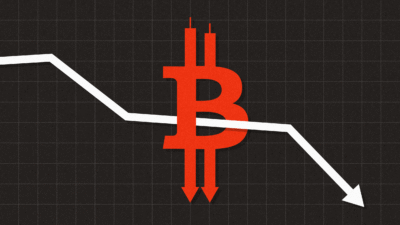New CLO ETFs Launch Amid Bankruptcy-Sparked Pullback
Banks are writing off hundreds of millions of dollars in loan defaults, and the wind down in CLO trading may not be a bad thing.

Sign up for exclusive news and analysis of the rapidly evolving ETF landscape.
It might seem like a delicate time to launch a collateralized loan obligation ETF.
This month, investors have pulled more than $1 billion from CLO exchange-traded funds in the US, which appears to be the fallout from the September implosions of two companies: Subprime auto lender Tricolor Holdings and auto parts firm First Brands Group. That has led credit managers, including JPMorgan (which lost $170 million related to Tricolor’s bankruptcy), to quickly reassess the corporate debt they hold. It also hasn’t helped that two banks recently reported millions of dollars in losses due to potential fraud on distressed commercial mortgages. Still, one new entrant in the ETF market dove in head-first last Wednesday, launching its second product, a fund that targets lower-quality, but higher-yielding CLOs.
“Reunderwriting is healthy … I feel like people maybe weren’t paying attention as much as they should,” said John Kim, CEO of Reckoner Capital Management, whose Reckoner BBB-B CLO ETF (RCLO) started trading Oct. 22. The two major bankruptcies seem to be mostly isolated incidents, he said, adding that it caused “a modest wind-down in CLO trading, and that is probably a good thing.”
Risk, Meet Reward
Investors can already get exposure to lower credit quality CLOs in ETFs, though the products on the market tend to include higher quality ones as well, Kim said. “We always knew we wanted to bring the mezzanine portion of CLOs back to investors,” he said. “BBBs and BBs provide really good risk-adjusted returns.”
Another firm, Advisors Asset Management, launched a fund last Thursday that spans credit quality. That product, the AAM Crescent CLO ETF (CLOC), comes “in an environment defined by inflation and interest-rate volatility, [when] investors are increasingly looking beyond traditional fixed income sectors to source meaningful income,” AAM Head of ETF Product Lance McGray said in an announcement.
Here’s a look at the two new ETFs, both of which are actively managed:
- RCLO, which charges 0.50% and represents $28 million in assets, uses the JPMorgan CLO High Quality Mezzanine Index as its benchmark.
- CLOC, which bills itself as the lowest-cost CLO ETF at net expenses of 0.18%, represents $50 million and is benchmarked against the JPMorgan US CLOIE IG Index.
- By comparison, there are at least 19 other US CLO ETFs on the market, representing about $37 billion in assets, data from Morningstar Direct show. The funds saw about $14 billion in net flows this year through September.
About that Credit Cycle: Amid concerns about rates going down, the spread on the mezzanine-level CLOs will still beat higher-quality debt, Kim said. “ The returns here should be 7% plus on an ongoing basis, at least where we are with rates,” he said. “This is a really good alternative to high yield.”











